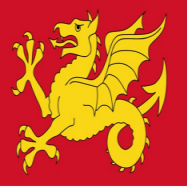CAT Sync - The CAT Tool for WebSDRs
Hi All,
Spotted online and may be of interest to some.
I don't know if it's any good - and it's not free, but has a relatively small price.
If anyone who tries it would you care to report back to the forum ?
Regards,
Martin - G8JNJ
The CAT Tool for WebSDRs
CATSync allows you to control public WebSDR receivers with your real rig connected via CAT control to your computer. It supports the classical WebSDR as well as Kiwi SDR interfaces:
- Syncronizes any public WebSDR server with your real RIG
- Supports a wide number of RIGs (it uses the popular OmniRig engine)
- Supports WebSDR and KiwiSDR browser based SDR receivers
- Tune the VFO of your radio and see the web SDR follow in realtime !
- Listen to the same frequency as your rig via web SDR
- Ideally suited e.g. for people suffering from local QRM
- Can track RX or TX VFO (e.g. to find that split of a DX station) if radio CAT supports both simultanously
- Can be interfaced with popular logging software using OminRig or via VSPE port splitter
- This software can help you to bring you back into ham radio when you are suffering from local temporary or permanent high noise levels in an urban QTH location.
The demo has all the functions of the full version, with the exception that it will not retune the web SDR audio in realtime (you only see the web SDR frequency updating, but not the audio). You can only retune the audio to the new frequency manually.
If the demo works on your system and you like the software please consider getting the full version. The full version is tuning both frequency and audio syncronized in realtime no limitations!
The Full version costs 9.95.

Comments
It starts up a CefSharpBrowserSubprocess as interface to the selected web Kiwi and listens to Omnirig CAT commands. As far as I see it works well bi-directional although sometimes clicking on the waterfall does not result in tuning of the rig. In the case an old ICOM 725 rig data transfer gets restored after going form VFO to memory tuning and back.
So far I have used it for scanning 2G ALE channels, transmission tests and interfacing it with various decoders and frequency data bases such as CSVUserlistBrowser.
To share the rig com port I use VSPE as portsplitter and browser audio transfer via "audio router" which helps out in diverting audio from the computer standard audio card to which it is tied to in seemingly all HTML5 browsers.
An obvious drawback with CatSync is that an actual rig connection is required but not always desired. In case of scanning thru a list of frequencies you end up with the rig following and endlessly clicking its bandswitch relays. So I am still thinking about somehow a fake transceiver connection to Omnirig just echoing the CAT commands.
VSPE: http://www.eterlogic.com/Products.VSPE.html
AudioRouter: https://github.com/audiorouterdev/audio-router
best regards, Ben
I've had some discussions with Oskar (the software author) about various aspects of CATsync and I've already asked if he could add CAT radio emulation, like the CAT to HDSDR option in HDSDR, so that other stand alone programs with CAT control outputs could drive it like a normal hardware radio without having to have one physically attached in order to echo back the CAT commands.
Fingers crossed :-)
Regards,
Martin - G8JNJ
Version history V1.12:
Fixed KiwiSDR mode change (was broken after KiwiSDR firmware update of 7th July 2018)
New support for clicking on Kiwi SDR station database labels (it will switch frequency and mode)
Important: This new feature requires a KiwiSDR with firmware v1.231 or later
Update radio via CAT when manually entering a frequency and hit enter (on WebSDR and KiwiSDR).
The long awaited next major release of CATsync is here.
This is reflected in a major version number increase due to significant feature increases.
The new version is V1.2.
Version history V1.2:
Fixed one major bug breaking the link to the SDR website after loading a second site
New Feature: CAT Radio Emulator. This allows CATsync to behave like an external radio. Elecraft K3 is being emulated.
(e.g. this way you can connect e.g. external decoder programs like WSJT-X or FLDIGI or others to the emulated K3 radio in CATsync)
This new feature may still be buggy with some untested programs and CAT emulator supports only frequency and mode reading/setting.
To use this feature you need to install a third party virtual serial port driver.
Browser cookies are now supported, allowing memorizing e.g. last frequency, mode, memories, etc.
Mouswheel tuning in WebSDR is now also syncing CAT (KiwiSDR does not support mousewheel tuning as it uses it for zooming)
Audio recording functions in WebSDR and Kiwi now working. Audio files are automatically saved into CATsync application path.
RX / TX switching of your local radio can be now also controlled via CATsync GUI button.
Introduced unmute delay (200ms for WebSDR and 1500ms for Kiwi) for Mute on TX to reduce hearing your own echo at end of TX.
Various smaller bugfixes (based on user reports)
Thanks for supporting my software.
73 de Oscar DJ0MY
Today I release a very quick bugfix release of CATsync due to some faulty behaviors in V1.2.
The new version is V1.21.
Version history V1.21:
Fixed the broken JavaScript injection preventing KiwiSDR with newest firmware to react on Click&Tune works now OK.
Fixed flickering database labels while retuning.
Introduced Browser Zoom with CTRL + and CTRL hotkeys (same as normal browsers use)
Saving of audio recordings may not be working properly due to limited access rights to Windows default application install path
Now a Save as file dialog is shown with your Windows documents folders shown before saving, which should give you full flexibility
Thanks for supporting my software.
73 de Oscar DJ0MY